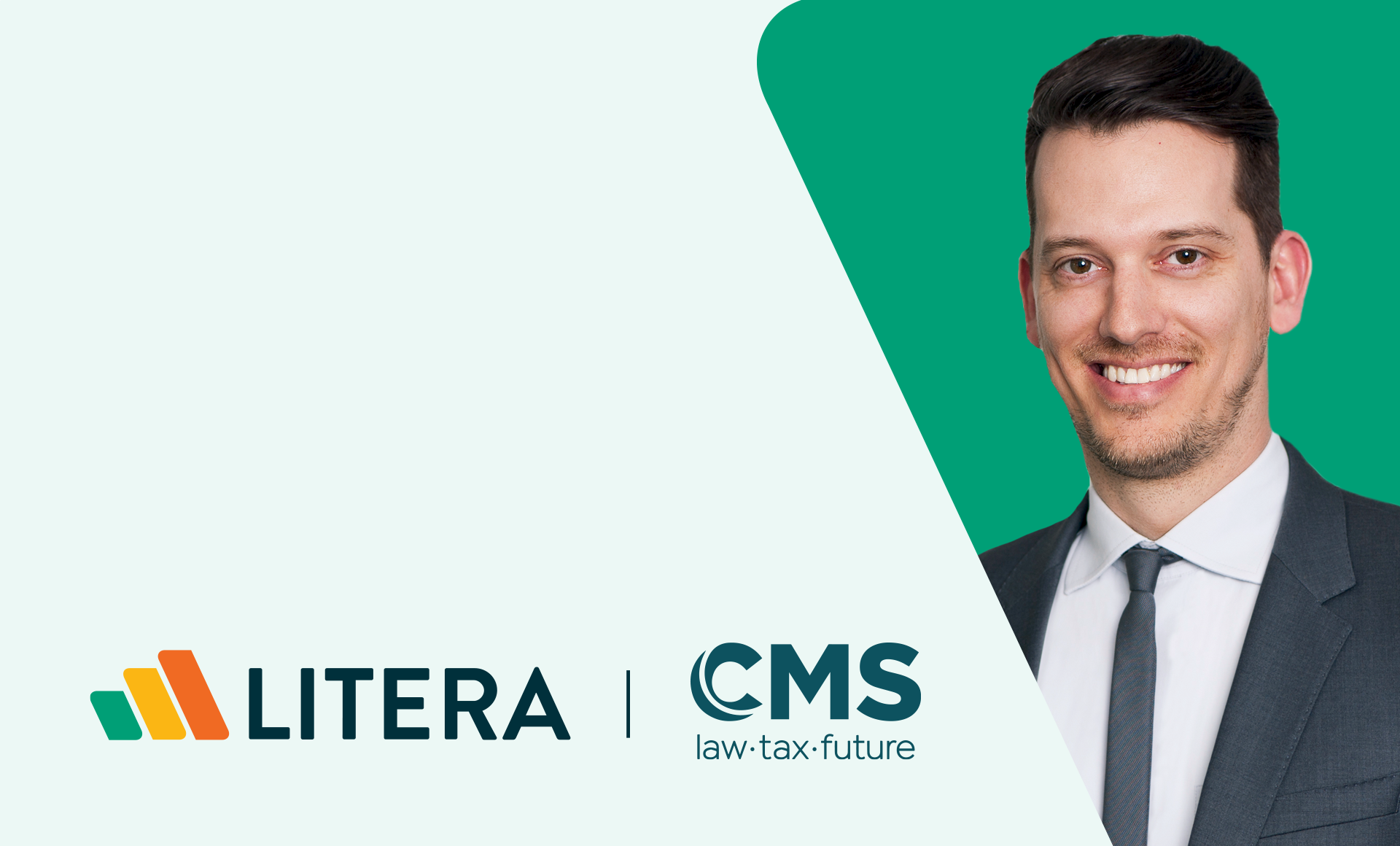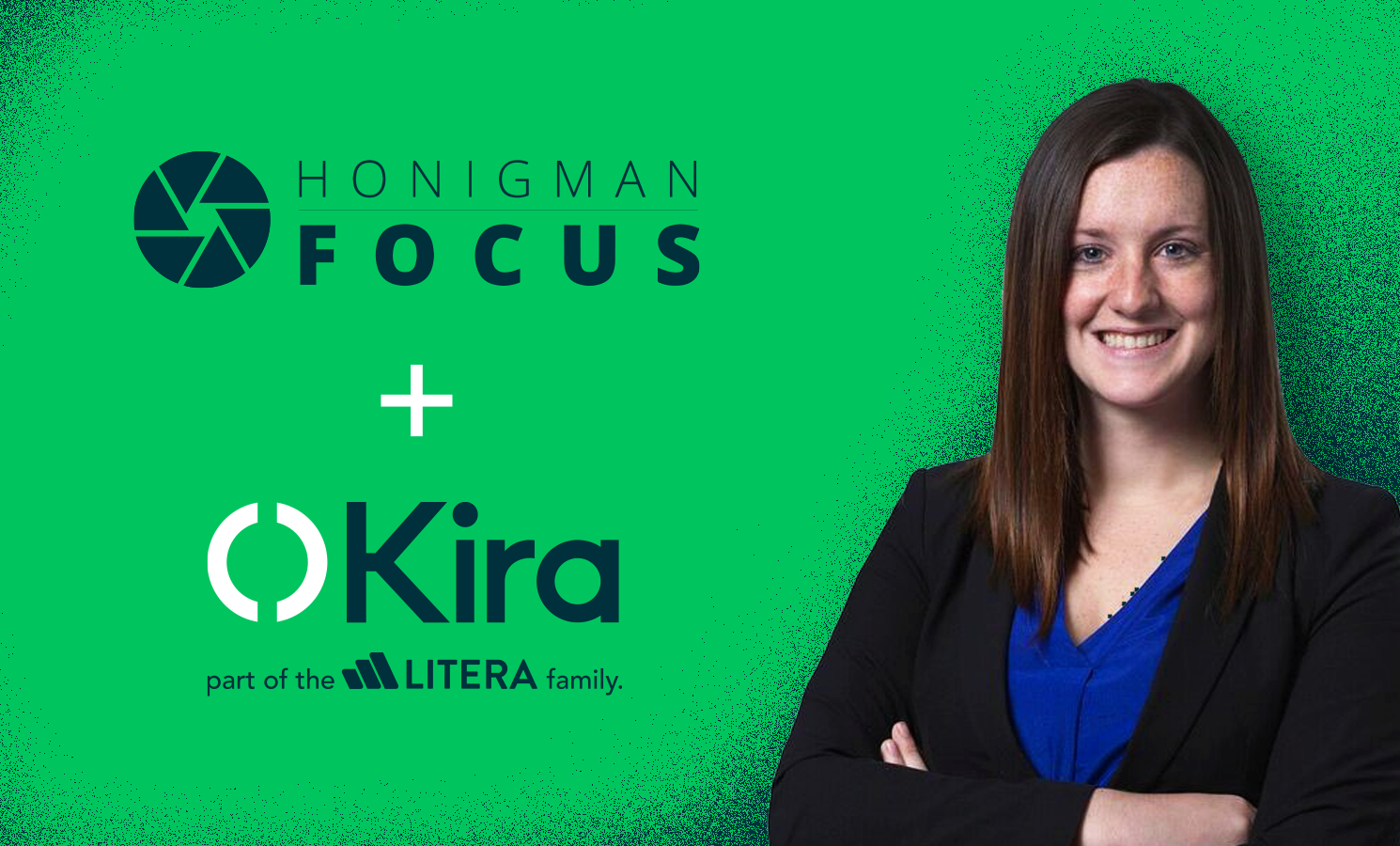Kira Systems recently had the pleasure of sponsoring an ILTA Lunch and Learn session, hosted by Clyde & Co in London, UK. In this session, moderated by Richard Tromans of Artificial Lawyer, a panel of Kira customers, discussed how Kira has helped their respective firms optimize legal service delivery, be more competitive through the use of technology and meet client demands more effectively.
The session kicked off with a quick discussion of the shifting legal landscape, the different technologies law firms might consider as part of their strategic planning and the key specifications to consider when exploring contract analysis machine learning solutions.
With the groundwork laid, the attention shifted to our three panelists, Isabel Parker from Freshfields Bruckhaus Deringer LLP, Siddhartha Mankad from Kemp Little LLP and Nick West from Mishcon de Reya. All three firms were asked to join our team on stage to discuss their journey to adopt machine learning, their firm’s use case, and impart some lessons learned for our audience.
Here is an overview of what they had to say:
Freshfields
Isabel Parker, Director of Legal Services Innovation at Freshfields Bruckhaus Deringer LLP, started by outlining how her firm set up their legal services centre eighteen months ago. The centre has a mandate to optimise the firm’s legal processes focusing on six key areas of technology adoption ranging from artificial intelligence and automation to expertise, smart documents, blockchain and smart contracts.
The Freshfields team started using Kira out of the box with standard models about a year ago. However, the team quickly realized that by leveraging Kira Quick Study to train additional custom models, they would be able to provide clients with even greater value in terms of both legal expertise and efficiency. The flexibility of Kira has led to the adoption of the platform by the corporate, derivatives, regulatory, and dispute resolution practice groups across Freshfields’ offices.
To illustrate the potential of Kira to transform existing service delivery models, Isabel presented an innovative example of using Kira and Hot Docs together for a matter involving a client facing an overwhelming number of dispute-related claims. The client had 6,000 claim documents and was receiving and addition 200 every week. To meet the client’s need, the matter team set-up a system whereby Kira automatically extracted claims information from an internally developed case management system, pushed key information to HotDocs which then generated the documents the client needed. Excited by how this combination of technologies created a great total solution, Isabel also spoke about how the team has been using Kira for regulatory reviews including helping clients respond to assessing their Brexit requirements and to changes in German regulations.
So what cautions did Parker have for firms just starting off? She said that, just like any cloud service, information security is still a challenge, particularly for larger financial services clients. She said when it comes to training good models, “governance” is key. By that, she explained she meant being intentional about which models are being built, for what purpose, and who decides when they are ready for wider use. Freshfields says they are very particular about creating detailed model documentation, both for internal communications as well as to improve the ability to explain Kira well to clients.
Kemp Little
Next to address the room was Siddhartha Mankad, Chief Operating Office of Kemp Little LLP. Kemp Little is eighteen months into adoption of Kira and continually experimenting with the potential use cases of Kira. Siddartha described Kemp Little’s innovation strategy as focused on “aggressively adopting new technologies in order to work smarter and be competitive.” When looking at different AI technologies, Kemp Little has been focused on finding multiple use cases for each solution and remaining persistent to see how the firm can stand out in their adoption of AI technology.
Kemp Little has adopted Kira to focus on due diligence and general commercial contract review, as well as Brexit and GDPR analysis projects. The firm has found that even without the machine learning element, adopting Kira has allowed the firm to have greater transparency into who is working on what types of documents and what is the status of any given review, as well as helping to make sure client deliverables are always in sync. And by using Kira Quick Study on active matters, Kemp Little says they have built up a bank of custom trained review model know-how, “without even trying”. (He did acknowledge there is work still to be done to go back and fine-tune those models.)
In terms of lesson learned, Siddhartha describes Kira as “not a silver bullet …but a silver shotgun.” He says, “Many early projects may fail but you will find a use case for your firm or your clients and it will definitely be worth it.” He reports that the greatest barriers to adoption has been challenges in communicating the potential uses of Kira internally and finding large enough variety of documents to train effective models. The key takeaway: “Experiment, experiment, experiment!”
Mishcon de Reya
Last up in the panel discussion was Nick West, Chief Strategy Officer of Mishcon de Reya LLP. Mishcon is the latest of the three firms to adopt Kira and their journey has been a little different. Nick has focused Mishcon’s innovation strategy on understanding what the firm’s clients really want from their legal service providers. In thinking about contract analysis, one of the things Nick’s team found was a disconnect between what the lawyers had been producing and their clients’ needs.
Kira is currently hard at work with Mishcon’s real estate practice where the firm was experiencing significant pressure on both lawyers and fees alike from clients demanding more for less. Nick’s team is looking to use Kira to not only produce the summary reports his lawyers need to perform their analysis but also how the review team can use Kira to extract key data points their clients want so the client can update their own internal lease management databases.
On one particular matter, Nick described the “eureka moment” when one of the key real estate partners got on board with Kira. The matter required a specific model be trained which the partner did herself using a set of 38 documents. Once trained, Kira was able to automatically identify the provision in the remaining 350 documents, allowing the review to be completed in record time. The reaction was “gosh, that went better than we expected.” The success the Mishcon team experienced on this matter helped to provide a better understanding within the firm of how Kira can positively impact the profitability of a matter and help open opportunities in new areas.
Focused on the lessons learned in the adoption of Kira at Mishcon de Reya, Nick says the biggest barrier to adoption has been worry by the lawyers of “what if Kira gets it wrong”. He says internal champions who have a strong understanding of the platform, are the key to success, communicating the benefits of the software, clearly explaining the risks vs rewards calculations to ease concerns, and ensuring that the firm is focused on meeting the client’s specific need at every turn.
With a packed room and a lot of excitement, the session wrapped up with a Q&A which we will detail in a subsequent blog where we will pull together all of the FAQs from our recent world tour to help you be better prepared for the machine learning journey ahead.



